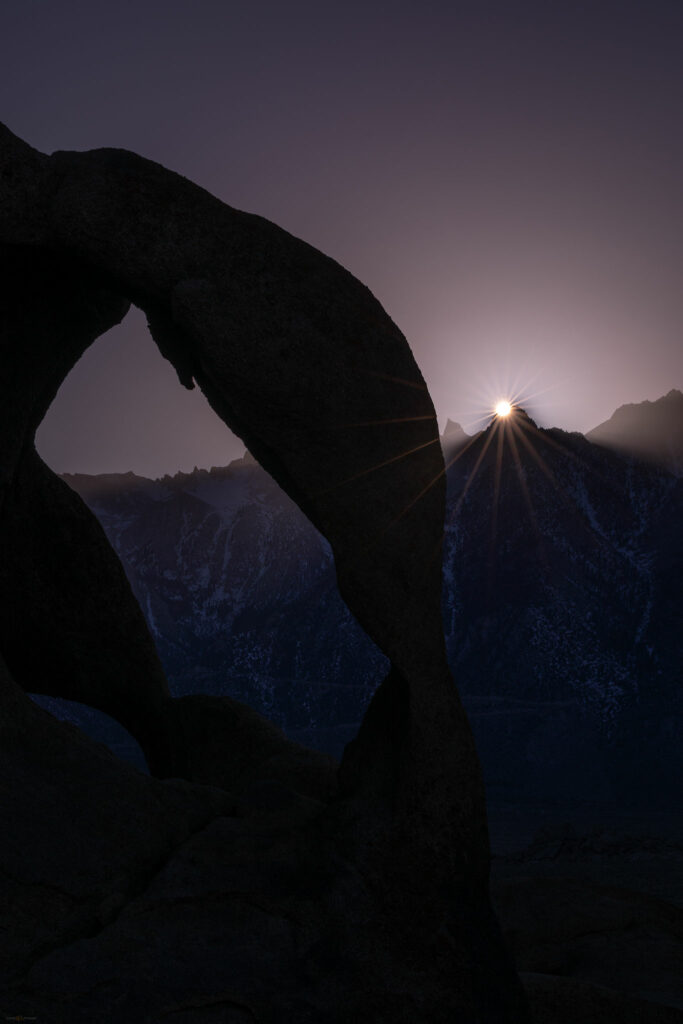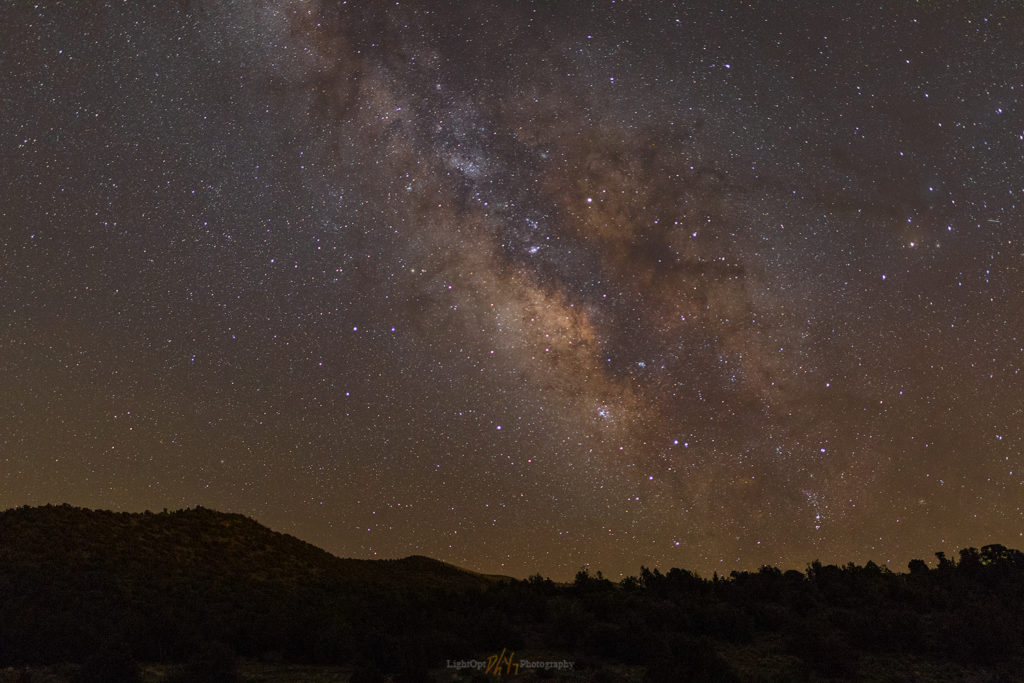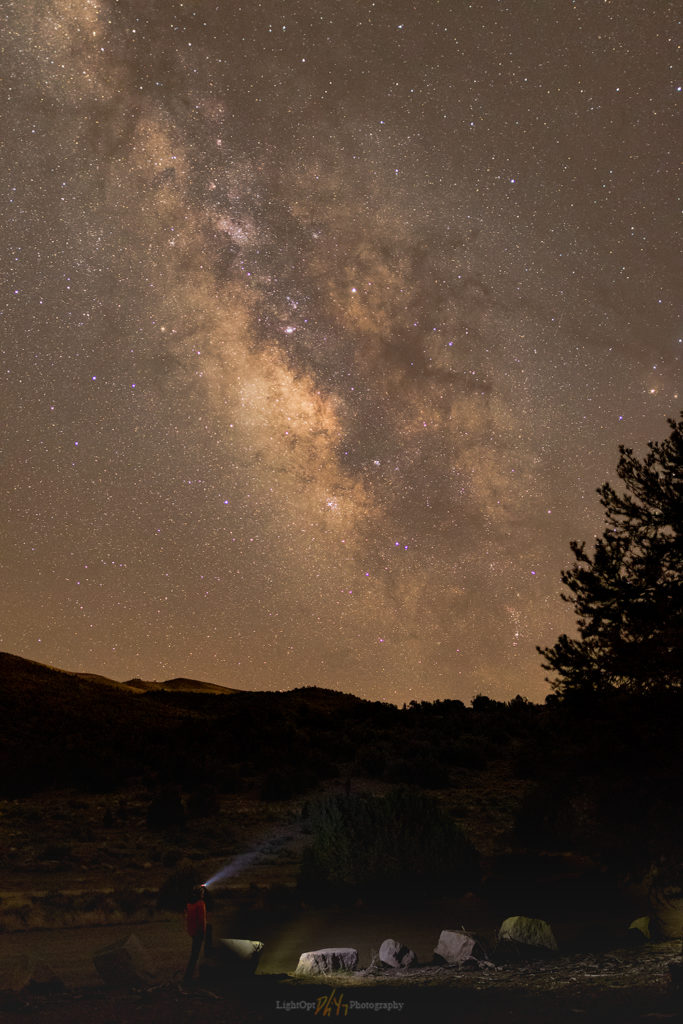It was time for a shower. Climbing out of Death Valley, we arrived at Lone Pine, California, in the late morning, seeking refreshment and food. The hotel was not crowded so we checked in easily, cleaned up, and wandered across the street for BBQ. It was not that we ate poorly in Death Valley, we just needed to fuel up for our last outings – an evening and early morning in the Alabama Hills. Lone Pine felt strange. I had worked here for extended periods last year, and I had typically camped in my trailer. Now I was a tourist staying in town and making excursions to the Hills; the role had been switched.
The evening was clear with blue skies settling toward a sudden sunset. Heading toward the portal road, Randy and I grabbed a late coffee and ice cream to go. But the first curve disengaged me from my vanilla, and it dropped surprisingly in my lap (sorry about the any spot I missed Randy!) – one should not juggle espresso and a cone when chasing light. We headed north toward the ‘boot’ and the ‘cyclops’, meeting up with the team as we hiked in. With the sharp and abrupt light, and with the forecast suggesting potential for an interesting morning with storm clouds over the Sierra, we used this as a scout. Our trip would culminate in the morning.
Quinn, Randy, and I met in the parking lot well before sunrise. We wanted to check the Milky Way potential at the ‘cyclops’. It is always a highlight of early morning walking in the star-lit desert, waiting for the granitic outcrops to loom in the light of headlamp. A distant owl warns of our approach. In the darkness of the hills the Milky Way is clear as it settles in a broad arch above the eastern horizon. The promised clouds are evident in dark patches masking stars as they tear away from the mountain front. Some may curse clouds in an astro-shot, but I have always liked any well-placed clouds especially if they simply add glow to a few of the brighter stars or provide depth and scale to the otherwise dark landscape – I am a minimal light-painter. We did, however, light the arch’s interior and committed to working on galactic images until the sun turn our attention to the Whitney massive beginning its glow in the west. The storm was at almost the perfect position, rolling over the summits with a misty gauze below the dark density of water-bearing clouds.

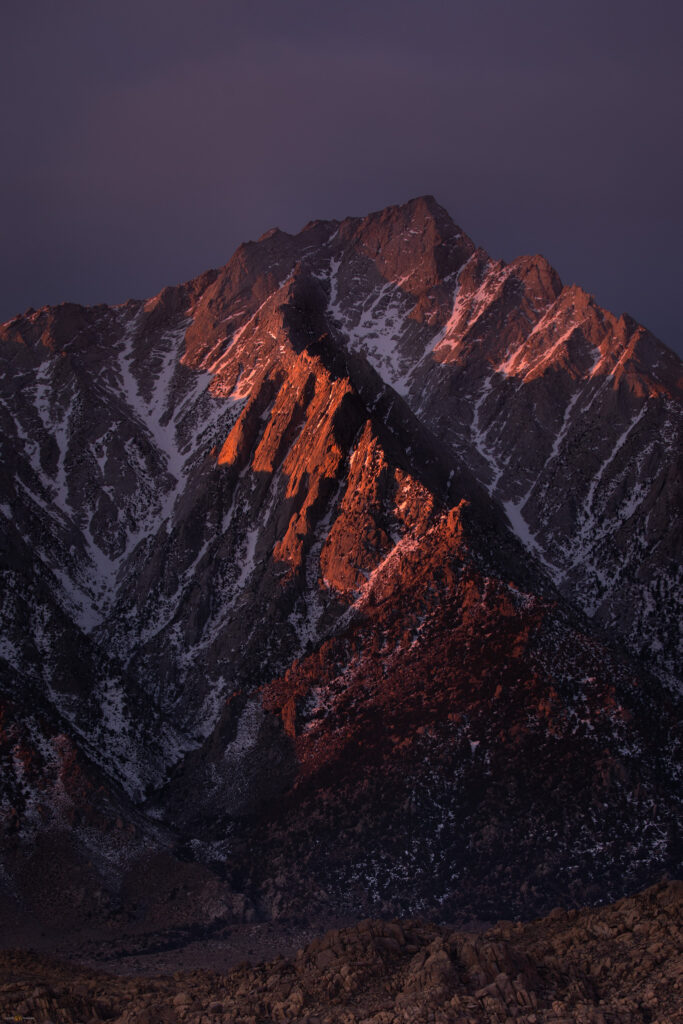
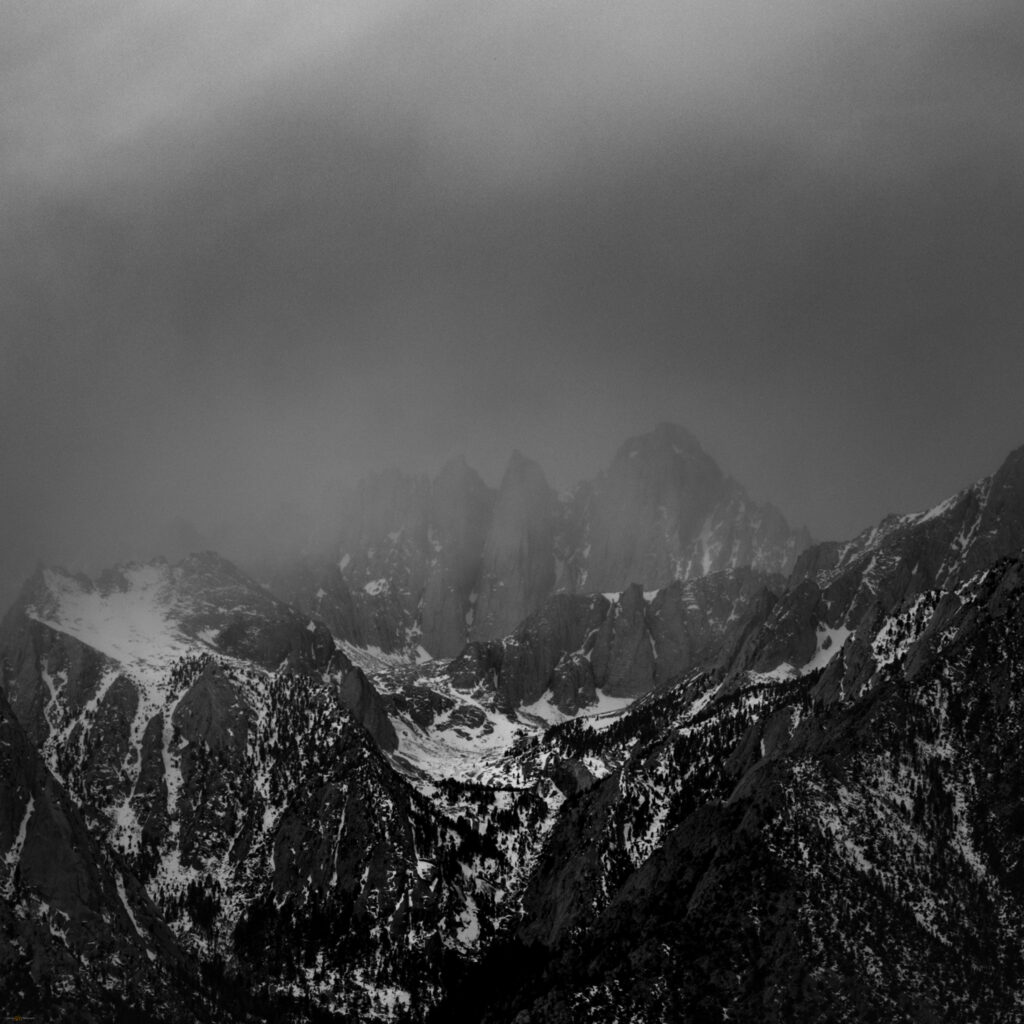
We could tell it would not last long. The gift of alpenglow was fleeting but I think we made the most of it. I had one of my most relaxed mornings of our trip, feeling in-the-zone. I reached for long and close images of Lone Pine Peak and the needles of the Whitney summit ridge before backing away for a wide, multi-image panorama of the Range of Light. Its name written in the first cast of dawn. Our trip came to a close.
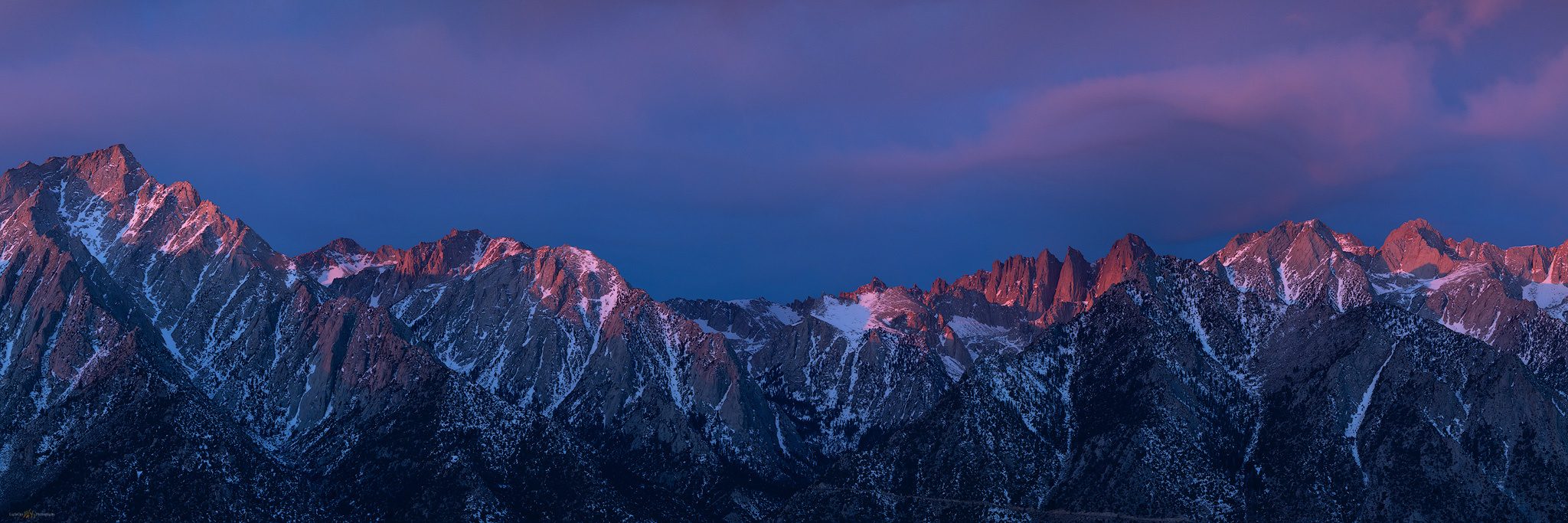
I write this many months and a pandemic or two later. Little did we know as we parted, separately leaving Lone Pine in the late morning, that much of our freedom to roam would fade as the mountains disappeared behind the storm clouds, replaced by seemingly intractable problems brought about by a polarized, dystopian loss of trust and community. We had these few days that we could look back on – the days when we could wander. These few photos, and the memories of comradery, remind me that, with care and effort, our wandering will return. As the landscape and its emotions teach us, let us not take it for granted.
Keep going.
Please respect the natural and cultural resources of our public lands.
